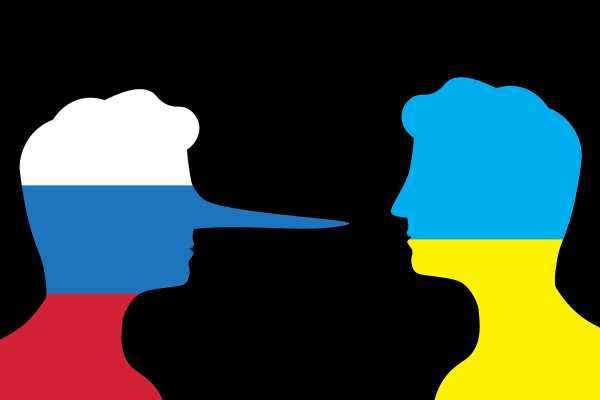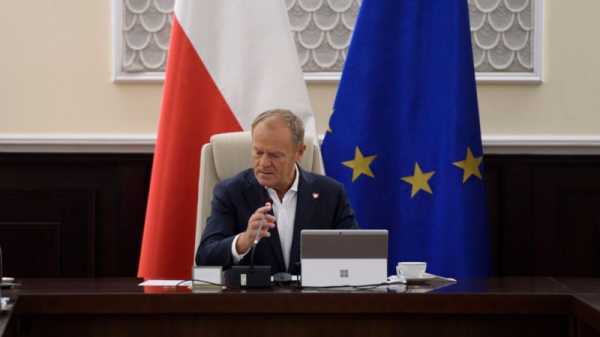
On March 11, at the United Nations, Russia accused the United States and Ukraine of collaborating on developing chemical and biological weapons. Russian officials claimed to have documents proving an attempt to destroy evidence of this illegal activity. None of the coverage reveals whether the documents published on the Russian Defense Ministry’s website make a credible case. In other words, the Russian accusations may or may not be true. Whether such activity is likely or not is another question, but even if it were considered likely, that does not make it true.
The US and Ukraine have consistently and emphatically denied any even potentially offensive operations. The debate became complicated last week when at a Senate hearing, US Under Secretary of State Victoria Nuland admitted that the laboratories exist and were conducting research that might have dangerous consequences if it fell into Russian hands. She revealed nothing about the nature of the research. Various US officials explained that the research existed but aimed at preventing the use of such weapons rather than their development. That disclaimer may or may not be true.
Try This Game to Evaluate Levels of Disinformation in Times of War
READ MORE
At the United Nations meeting, the US ambassador to the UN, Linda Thomas-Greenfield categorically denied any activity with these words: “I will say this once: ‘Ukraine does not have a biological weapons program.’” As The Guardian reports, the ambassador then “went on to turn the accusation back on Moscow” when she accused Russia of maintaining a biological weapon program. That may or may not be true. In fact, both accusations have a strong likelihood of being true.
ABC News summarized the issue in these terms: “Russia is doubling down on its false claims that the U.S. and Ukraine are developing chemical or biological weapons for use against invading Russian forces, bringing the accusation to the United Nations Security Council on Friday.”
Today’s Weekly Devil’s Dictionary definition:
False claims:
Hypotheses that are likely enough to be true but difficult to prove conclusively
Contextual Note
The basic claim made by ABC News is true, at least if we reduce the message to the incontestable fact that the Russians brought the “accusation to the United Nations Security Council on Friday.” What may or may not be true is the reporter’s assertion that these are “false claims.” As noted above, the Russian claims may or may not be true, meaning they may or may not be false.
Embed from Getty Images
For news reporting in times of war, propaganda becomes the norm. It trumps any form of serious inquiry, that the legacy media in the US bases its reporting on two complementary suppositions: that everything US authorities tell them is true and that most everything Russians claim is false. Those same reporters who suppose their side is telling the truth and the other side is lying also suppose that their readers share the same suppositions. In times like these, propaganda is the most effective and especially the most marketable form of communication.
The second sentence in the ABC News article adds a new dimension to the assertion. It complains that a “web of disinformation, not only from Russian state media but also Chinese propaganda outlets and even some American voices, have increasingly spread the conspiracy theory this week.” The metaphor of a spider’s web conveniently brings back the sinister logic of the McCarthy era, when certain Americans were accused of being witting or unwitting vectors of communist propaganda. And it inexorably links with the idea of spreading a “conspiracy theory.”
It’s worth stopping for a moment to note that each sentence in the ABC News article is a paragraph. Single-sentence paragraphing is a journalistic technique designed to make reading easier and faster. Subtle writers and thinkers, such as Al Jazeera’s Marwan Bishara, can sometimes employ the technique to create a percussive effect. But in times of heightened propaganda, the popular media resorts to the practice to short-circuit any temptation on the reader’s part to think, reason, compare ideas or analyze the facts. In journalistic terms, it’s the equivalent of aerial bombing as opposed to house-to-house combat.
The third sentence in the ABC News article delivers a new explosive payload, this time with appropriately added emotion (“heightened concern”) and a horrified hint at sophisticated strategy (“false flag”). It speaks of “heightened concern among U.S. and Ukrainian officials that Russia itself may be planning to deploy chemical or biological weapons against Ukrainian targets or as part of a so-called ‘false flag’ operation.”
In just three sentences, the article has mobilized the standard web of associations journalists use for propaganda masquerading as news. The vocabulary may include any of the following terms: “disinformation,” “fake news,” “false flag,” “conspiracy theory,” “propaganda,” “misinformation,” and, on occasion, the more traditional pair, “deception and lies.”

Make Sense of the World
Unique Insights from 2,500+ Contributors in 90+ Countries
I agree to receive emails and other content from Fair Observer. I understand that I may repeal my consent at any time. You can review our Privacy Policy and Terms of Use for further information .
The article’s fourth sentence is a quote from Ukrainian President Volodymyr Zelensky: “This makes me really worried because we’ve been repeatedly convinced if you want to know Russia‘s plans, look at what Russia accuses others of.” That is a trope the Biden administration has been using throughout this controversy. Zelensky has read the script and the journalist is there to transcribe it.
Historical Note
The still-developing history of COVID-19 that has been with us for nearly two and a half years should have taught us at least two things. Governments have a penchant for presenting a unique version of the truth that insists no other version is possible. They also excel at putting in place a system that suppresses any alternative account, especially if it appears to approach an inconvenient truth. Whether you prefer the wet market or the lab leak theory is still a matter of debate. Both narratives have life in them. In other words, either of them may or may not be true. For a year, thinking so was not permitted.
The second thing we should have learned is that the kind of experimentation done in biological and chemical research labs will always have both a defensive and an offensive potential. From a scientific point of view, claiming that research is strictly limited to defensive applications makes no sense. Even if the instructions given to research teams explicitly focus on prevention, the work can at any moment be harnessed for offensive purposes. Victoria Nuland appeared to be saying just that when she expressed the fear that Russians (the bad guys) might seek to do something the Ukrainians and Americans (the good guys) would never allow themselves to do.
Or would they? That is the point Glenn Greenwald made in citing the history of the weaponized anthrax that created a wave of panic in the days and weeks following the 9/11 attacks in 2001. George W. Bush’s White House, followed by the media, clearly promoted the idea that the “evidence” (a note with the message “Allah is Great”) pointed to the Middle East and specifically at Iraq’s Saddam Hussein. Even before 9/11, Bush’s White House had told the Pentagon to “accelerate planning for possible military action against Iraq.” In January 2002, the president officially launched the meme of “the axis of evil” that included Iraq, Iran and North Korea.
In retrospect, even though no legacy news media will admit this, the most credible interpretation of the anthrax attacks that killed five Americans was as a failed false flag operation designed to “prove” that Iraq was already using biological weapons. As the White House was preparing for war in Afghanistan, it sought a motive to include Iraq in the operations. The plan failed when it became undeniable that the strain of anthrax had been created in a military lab in the US.
Embed from Getty Images
Years later, the FBI “successfully” pinned the crime on a scientist at Fort Detrick called Bruce Ivins, the Lee Harvey Oswald of the anthrax attacks. The FBI was successful not in trying Ivins but in pushing him to commit suicide, meaning there would be no review of the evidence or reflection on the motive for the attacks. This at least is the most likely explanation because it aligns a number of obvious and less obvious facts. Nevertheless, even this narrative accusing the Bush administration of engineering what was essentially a more lethal version of a Watergate-style crime may or may not be true.
The moral of all these stories is that in times of conflict, everything we hear or read should be reviewed with scrutiny and nothing taken at face value. And just as we have learned to live with unsolved — or rather artificially solved — assassinations of presidents, prominent politicians and civil rights leaders, we have to live with the fact that the authorities, with the complicity of an enterprising media skilled at guiding their audience’s perception, will never allow us to know the truth.
*[In the age of Oscar Wilde and Mark Twain, another American wit, the journalist Ambrose Bierce, produced a series of satirical definitions of commonly used terms, throwing light on their hidden meanings in real discourse. Bierce eventually collected and published them as a book, The Devil’s Dictionary, in 1911. We have shamelessly appropriated his title in the interest of continuing his wholesome pedagogical effort to enlighten generations of readers of the news. Read more of The Fair Observer Devil’s Dictionary.]
Source: fairobserver.com



